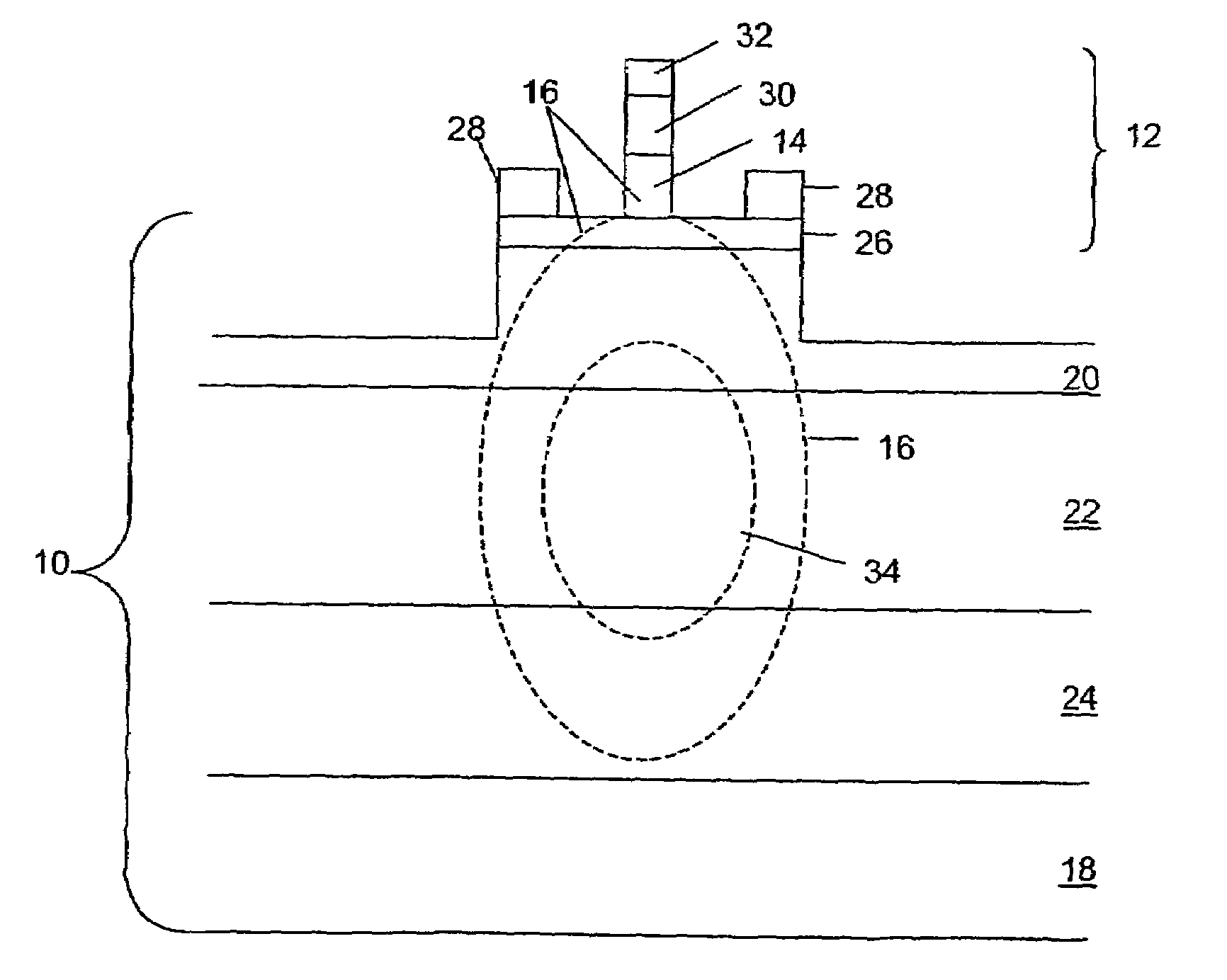Peripheral coupled traveling wave electro-absorption modulator
a modulator and traveling wave technology, applied in the field of optoelectronics, can solve the problems of limiting the saturation optical power of the modulator typically to a few milliwatts, and not taking full advantage of traveling wave interactions
- Summary
- Abstract
- Description
- Claims
- Application Information
AI Technical Summary
Benefits of technology
Problems solved by technology
Method used
Image
Examples
Embodiment Construction
[0009]Broadly stated, embodiments of the invention use peripheral coupling of a microwave wave and an optical wave. With the invention, strong EA modulation may be achieved. Embodiments of the invention may achieve number of benefits, including separation of design optimization for optical waveguides and microwave waveguides working together to modulate an optical wave; provision of a millimeters-long synchronized length for interaction between a microwave wave and an optical wave obtaining a very low modulation voltage; microwave transmission line design with low attenuation and impedance matching to the source; relatively easy optical coupling to fibers; and large optical saturation power compared to other EA modulators.
[0010]Turning now to FIG. 1, showing a schematic cross-section of an embodiment of the invention, an apparatus for optical modulation includes an optical waveguide 10 and a microwave waveguide 12. Microwave waveguide 12 has an EA material 14 sized and placed such t...
PUM
| Property | Measurement | Unit |
|---|---|---|
| optical saturation power | aaaaa | aaaaa |
| thickness | aaaaa | aaaaa |
| width | aaaaa | aaaaa |
Abstract
Description
Claims
Application Information
 Login to View More
Login to View More - R&D
- Intellectual Property
- Life Sciences
- Materials
- Tech Scout
- Unparalleled Data Quality
- Higher Quality Content
- 60% Fewer Hallucinations
Browse by: Latest US Patents, China's latest patents, Technical Efficacy Thesaurus, Application Domain, Technology Topic, Popular Technical Reports.
© 2025 PatSnap. All rights reserved.Legal|Privacy policy|Modern Slavery Act Transparency Statement|Sitemap|About US| Contact US: help@patsnap.com



